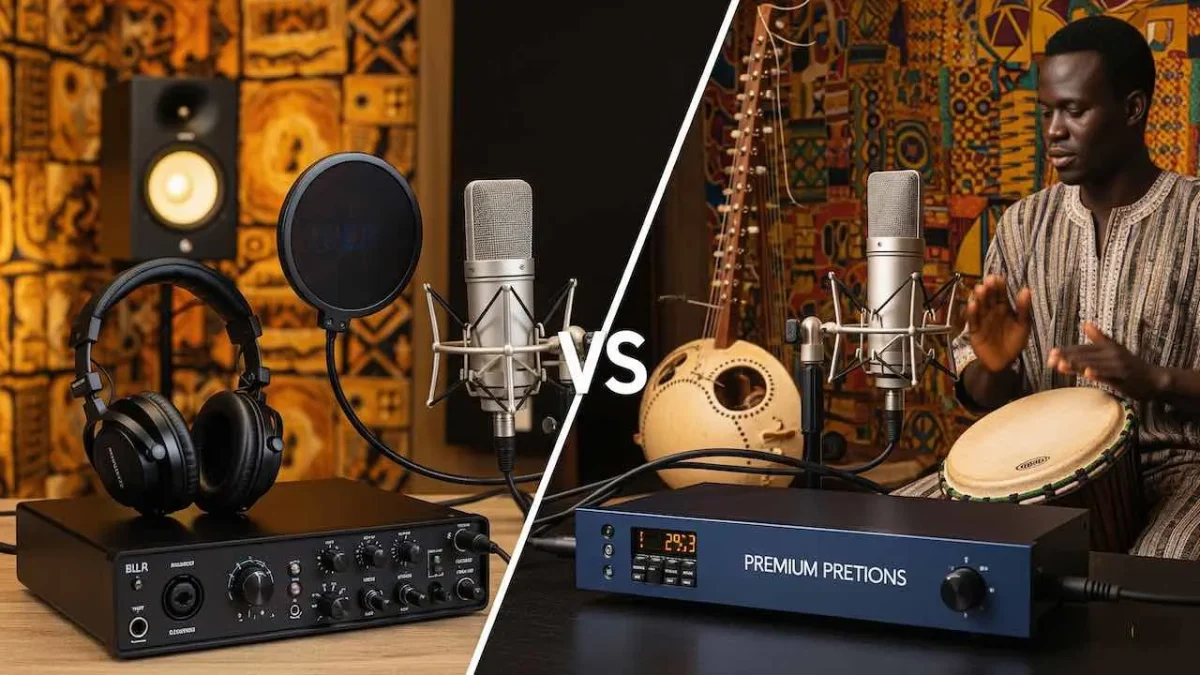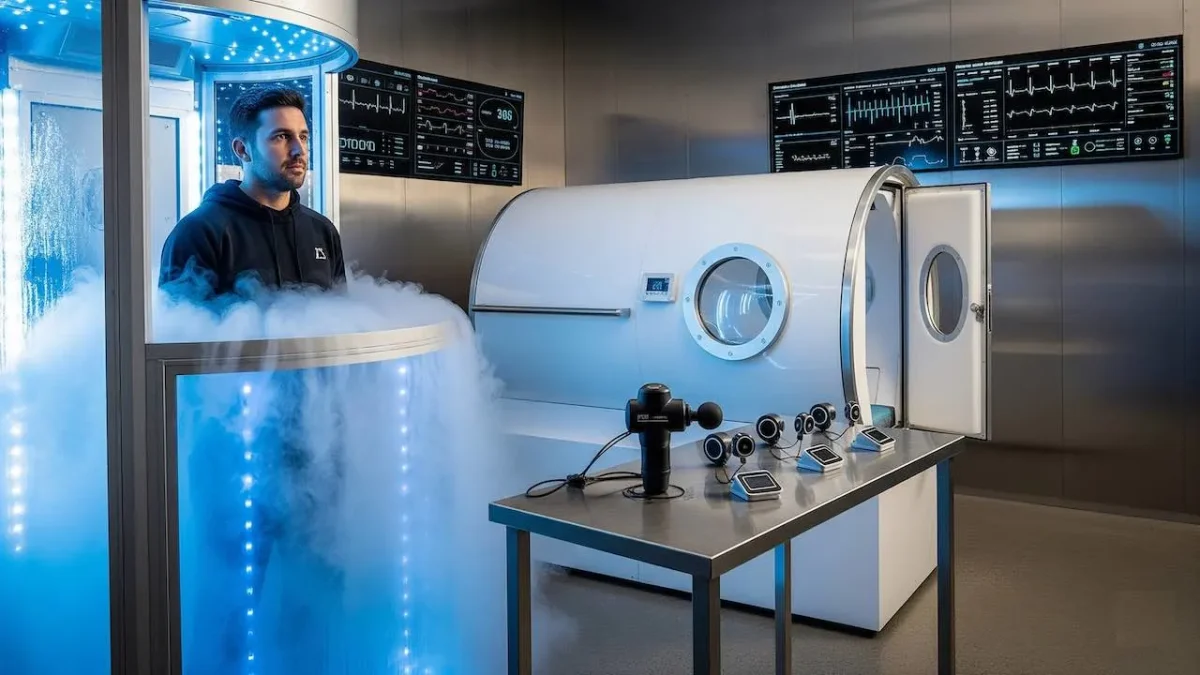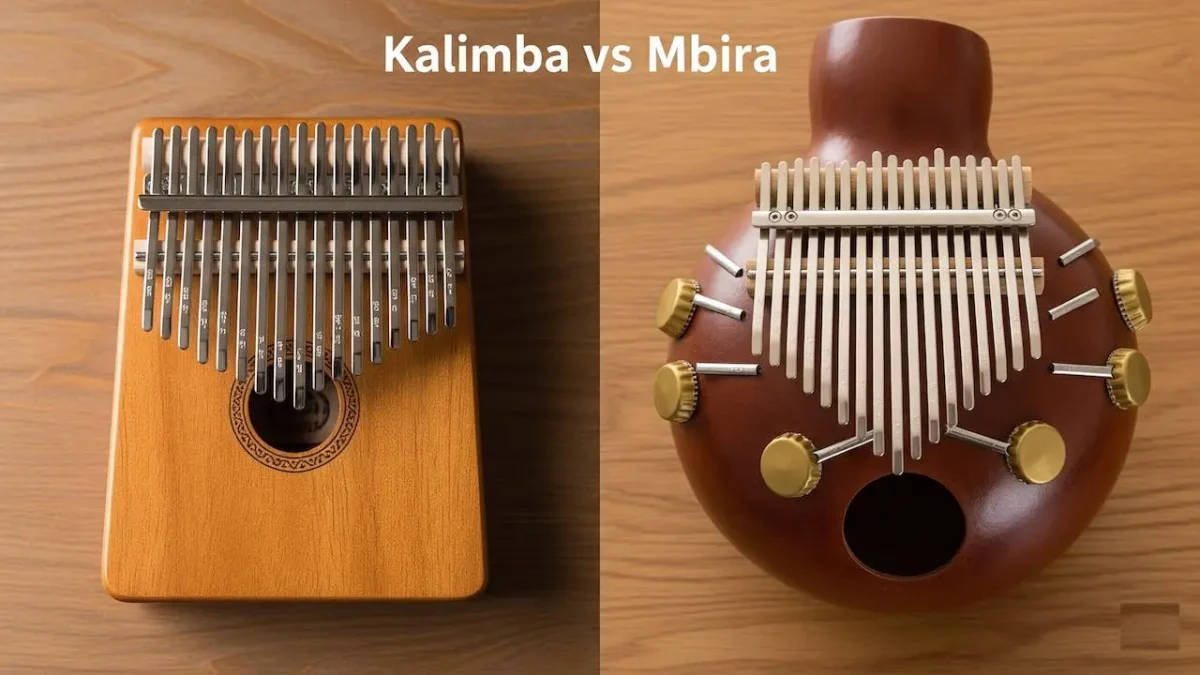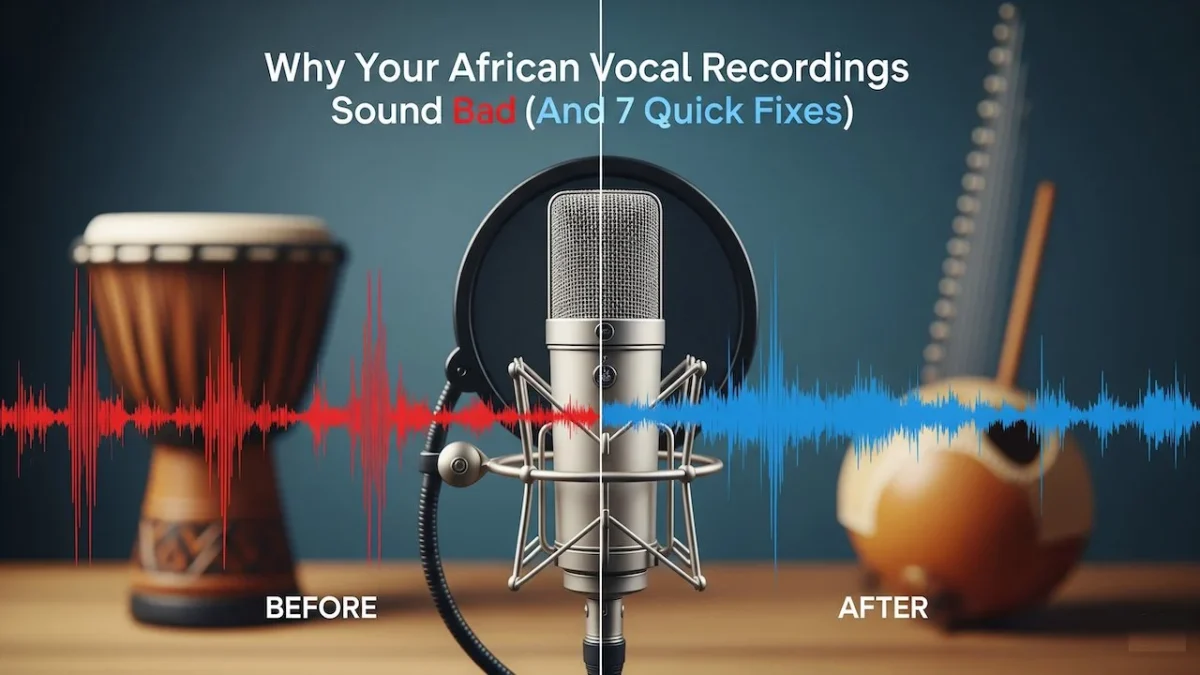
Best Audio Interfaces for Recording African Music: Under $500 vs Premium Options
Audio interfaces under $500 like the Focusrite Scarlett 2i2 4th Gen ($200) and MOTU M4 ($350) provide excellent quality for recording African music’s complex rhythms and multiple instruments, while premium options like the Universal Audio Twin X add analog warmth and advanced processing capabilities.
Recording African music requires audio interfaces that can capture the dynamic range of traditional instruments like djembes, koras, and talking drums alongside modern elements. Budget-friendly options now offer professional features that were once reserved for high-end gear, making quality African music production accessible to more artists.
Top Audio Interfaces Under $500 for African Music Recording
Budget audio interfaces have evolved significantly, offering features that meet the demanding requirements of African music production. Multiple input capabilities handle ensemble recordings while low-latency monitoring keeps musicians in sync with complex polyrhythmic patterns.
Focusrite Scarlett 2i2 4th Generation ($200)
The Scarlett 2i2 4th Gen delivers lower latency and enhanced features compared to previous versions. Two combo inputs accommodate microphones for vocals and direct instrument connections. The unit includes Air mode that adds brightness to recordings, perfect for capturing the shimmer of traditional African percussion instruments.
- 24-bit/192kHz recording resolution
- Ultra-low latency direct monitoring
- Two high-headroom instrument inputs
- Includes Ableton Live Lite and Pro Tools Artist
MOTU M4 ($350)
The MOTU M4 features exceptional DAC technology that rivals expensive gear while providing four inputs for small ensemble recordings. LCD metering displays input and output levels precisely, helping capture the full dynamic range of African instruments from soft kalimba notes to powerful djembe strikes.
- Four balanced TRS/XLR combo inputs
- ESS Sabre32 Ultra DAC technology
- Full-color LCD metering
- Zero-latency direct monitoring with blend control
Audient iD4 MkII ($200)
Premium-grade components deliver quality recordings despite the low cost. The Class-A JFET DI input captures the nuances of electric instruments used in contemporary African music. Console-style monitoring provides professional mixing capabilities during recording sessions.
- Class-A Audient console mic preamp
- JFET instrument input for warmth and character
- ScrollControl software navigation via encoder
- USB bus-powered operation
| Interface | Price | Inputs | Sample Rate | Best For |
|---|---|---|---|---|
| Focusrite Scarlett 2i2 4th Gen | $200 | 2 Combo | 192kHz | Solo artists, basic recordings |
| MOTU M4 | $350 | 4 Combo | 192kHz | Small ensembles, precise metering |
| Audient iD4 MkII | $200 | 1 XLR, 1 JFET | 96kHz | Console-style recording |
| Behringer UMC22 | $50 | 1 XLR, 1 TRS | 48kHz | Budget-conscious beginners |
Premium Audio Interface Options Above $500
Premium interfaces provide advanced features like analog processing, expanded I/O, and superior converters. These units excel when recording full African ensembles or when seeking that elusive analog warmth that complements traditional African music aesthetics.
Universal Audio Twin X Duo ($800)
Recording through this interface blends analog warmth with digital precision. Real-time UAD processing allows adding vintage EQs and compressors during tracking. The solid construction and exceptional sound quality make it suitable for professional African music production.
- Two Unison-enabled mic preamps
- Real-time UAD processing with included plugins
- 24-bit/192kHz conversion
- Desktop or rack-mountable design
Solid State Logic SSL 18 ($1,200)
Professional sound quality and features accommodate pro-studio workflows. Multiple headphone outputs support larger recording sessions. The SSL legacy preamp design adds character that complements both traditional and contemporary African music styles.
- 18 inputs and 8 outputs
- SSL-designed SuperAnalogue preamps
- Two independent headphone outputs
- Legacy 4K button for SSL console character
PreSonus Studio 1810c ($500)
Eight combo inputs handle full band recordings while ADAT expansion allows additional channels. The robust driver stability ensures reliable performance during long recording sessions common in African music production.
| Premium Interface | Price | Inputs | Special Features | Best Application |
|---|---|---|---|---|
| UA Twin X Duo | $800 | 2 Unison | Real-time UAD processing | Studio recording with vintage character |
| SSL 18 | $1,200 | 18 total | SSL SuperAnalogue preamps | Professional multi-track recording |
| PreSonus Studio 1810c | $500 | 8 combo | ADAT expansion | Band recordings, expandable setups |
Key Features for African Music Recording
African music recording demands specific technical capabilities due to the genre’s unique characteristics. Understanding these requirements helps select the right interface for your musical style and recording environment.
Multiple Input Capabilities
Traditional African music often involves multiple instruments playing simultaneously. Polyrhythmic structures require interfaces with enough inputs to capture individual instruments separately while maintaining phase coherence across channels.
- Minimum 4 inputs for small ensemble recordings
- Expandability through ADAT or additional units
- Matched preamp designs across all channels
- Individual phantom power switching per channel
High-Quality Preamps
Percussion instruments create transient-rich signals that demand clean, fast preamps. Talking drums and djembes produce complex harmonics that inferior preamps can blur or distort. Quality preamps preserve the attack and decay characteristics essential to African rhythms.
Low-Latency Monitoring
Musicians must hear themselves without delay to maintain tight rhythmic accuracy. Direct monitoring capabilities bypass computer processing, allowing real-time performance feedback during recording sessions.
Budget vs Premium: Making the Right Choice
The decision between budget and premium interfaces depends on your recording goals, budget constraints, and long-term musical plans. Both categories now offer professional capabilities previously unavailable at their price points.
When Budget Interfaces Excel
Modern budget interfaces provide professional results for most African music recording scenarios. Home studios and beginning producers can achieve commercial-quality recordings using units under $500.
- Solo artist recordings and overdubs
- Podcast production featuring African music
- Learning traditional African music techniques
- Demo production and songwriting
Premium Interface Advantages
Professional studios and serious producers benefit from premium interface features. Advanced analog processing and expanded I/O capabilities support complex recording scenarios common in professional African music production.
- Full band recording sessions
- Professional album production
- Multiple simultaneous headphone mixes
- Integration with professional studio equipment
Recording Traditional African Instruments
Different African instruments present unique recording challenges that inform interface selection. Understanding these requirements helps optimize your recording chain for authentic sound capture.
Percussion Instruments
Djembes, talking drums, and frame drums produce wide frequency ranges and sharp transients. High-quality preamps with fast slew rates capture these dynamics without compression or coloration.
- Dynamic range exceeding 110dB
- Fast transient response in preamps
- Multiple input options for drum ensemble recording
- Low noise floor for quiet sections
String Instruments
Koras, ngonis, and other traditional string instruments require pristine audio paths. The subtle harmonics and sympathetic resonances need transparent recording chains that preserve tonal complexity. Learning proper kora techniques helps optimize recording approaches.
Wind Instruments
Flutes, horns, and reed instruments benefit from quality microphone preamps. Breath sounds and embouchure techniques create unique timbres that demand accurate reproduction.
Setting Up Your African Music Recording Studio
Proper studio configuration maximizes your interface’s potential for African music recording. Room acoustics, monitoring, and signal chain optimization all contribute to professional results.
Acoustic Considerations
African music often features large dynamic ranges that expose room acoustic problems. Treating reflective surfaces and controlling reverberation helps capture instruments cleanly.
- Bass trapping in corners for drum recording
- Absorption panels to control reflections
- Isolation booths for individual instrument recording
- Variable acoustics for different recording scenarios
Monitoring Setup
Accurate monitoring reveals the subtle nuances in African musical performances. Studio monitors with flat frequency response help make mixing decisions that translate across different playback systems.
Software Integration and Workflow
Modern audio interfaces include software bundles that provide complete recording solutions. Understanding these tools helps establish efficient workflows for African music production.
Included DAW Software
Most interfaces include digital audio workstation software like Pro Tools Artist, Ableton Live Lite, or manufacturer-specific applications. These programs provide the foundation for multi-track African music recording and mixing.
Plugin Integration
Virtual instruments and effects expand creative possibilities. Many interfaces include sample libraries and processing plugins specifically designed for world music production.
Maintenance and Longevity
Audio interfaces represent long-term investments in your recording setup. Proper care and maintenance ensure consistent performance throughout their operational life.
Driver Updates
Regular driver updates maintain compatibility with modern operating systems. Manufacturers frequently release updates that improve performance and add features.
Physical Care
Proper storage and handling protect your investment. Dust covers, cable management, and appropriate power conditioning extend interface lifespan.
People Also Ask
44.1kHz or 48kHz sample rates capture African music effectively for most applications. Higher rates like 96kHz or 192kHz benefit when using significant digital processing or when archival quality is required.
Eight inputs accommodate most traditional African ensemble configurations. This allows individual microphones for percussion instruments, vocals, and melodic instruments while maintaining separation for mixing flexibility.
Yes, condenser microphones commonly used for African instrument recording require 48V phantom power. Most quality audio interfaces provide phantom power on all microphone inputs.
Modern budget interfaces like the MOTU M4 and Focusrite Scarlett series provide professional results. The limiting factors are typically input count and advanced features rather than basic sound quality.
Frequently Asked Questions
The MOTU M4 excels at percussion recording due to its exceptional dynamic range and precise metering. Multiple inputs allow close and ambient microphone techniques simultaneously.
Use interfaces with multiple inputs like the PreSonus Studio 1810c for full ensemble recording. Individual channels for each instrument provide mixing flexibility and prevent audio bleeding between tracks.
Thunderbolt interfaces offer lower latency and higher channel counts but require compatible computers. USB interfaces provide broader compatibility and sufficient performance for most African music recording applications.
Quality microphones matter more than expensive interfaces for capturing African instruments authentically. A good dynamic or condenser microphone through a budget interface often outperforms expensive interfaces with poor microphones.
Direct monitoring prevents latency that disrupts tight rhythmic performance. African music’s complex polyrhythms require musicians to hear themselves without delay to maintain accurate timing.
Some budget interfaces support ADAT expansion for additional inputs. Units like the PreSonus Studio series allow connecting external preamps via digital connections, expanding recording capabilities affordably.
Selecting the right audio interface for African music recording balances technical requirements with budget considerations. Understanding the unique demands of African rhythmic patterns and traditional instruments guides this decision toward interfaces that preserve musical authenticity while providing modern recording capabilities. Whether pursuing professional African music production or exploring creative music composition, the right interface serves as the foundation for capturing Africa’s rich musical heritage.



